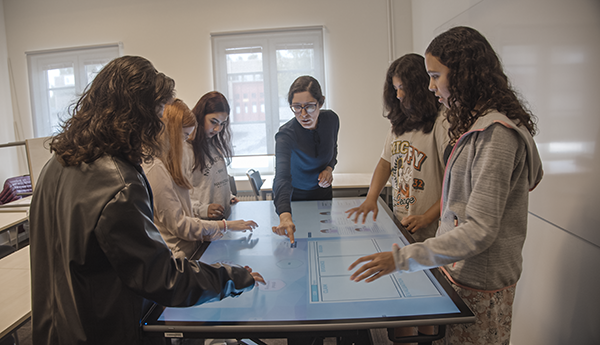As many educators know, students’ attention spans vary according to how interested they are in a topic. Attention spans are not a limitless resource, and instruction that doesn’t keep students engaged will likely yield unsatisfactory results. It is unrealistic to expect students to be interested in every topic we teach them, so how can we maximize their learning when their attention dwindles? One way is through microlearning, a teaching method that keeps students engaged by delivering bitesize lessons that pack a punch.

Microlearning, or nano-learning, breaks up broader topics into smaller, manageable chunks to avoid cognitive overload in students. It is based on the premise that these smaller chunks are more engaging and can be processed and absorbed more easily than larger chunks, which can overwhelm students and cause their attention to drift. Because these lessons are short, they can be revisited several times, leading to better retention of knowledge.
Each microlearning session lasts for a maximum of 15 minutes. During these 15 minutes, students will focus on a key concept or area by watching videos, reading articles, or having discussions. These sessions should also include practical activities which provide opportunities to apply the new knowledge.
In addition to helping students stay engaged and absorb new knowledge more effectively, microlearning is ideal for busy teachers as it is simpler to plan and assess than full-length lessons. This allows teachers to know immediately if students have mastered the topic or if they need to work on it more.
.png?width=600&height=336&name=A063_12030614_C001.00_03_03_13.Still016%20(1).png)
Ready to dive into microlearning in your classroom? We’ll show you how simple it can be by using a tool such as NUITEQ Chorus. By utilizing the standards-aligned lesson activities that the NUITEQ content team has created or by creating your own, you can activate students in an engaging, fun way that doesn’t lead to cognitive overload. Here’s how:
- Define the lesson’s objective.
- Use a Poll to access students’ prior knowledge.
- Then, start a related standard-aligned lesson activity. Most NUITEQ lesson activities begin with a short instructional video; videos are usually around 3 minutes long. By using videos to introduce topics, teachers can engage with the students through a format with which they are familiar and which immediately grabs their attention.
- When the video is complete, students can apply their newfound knowledge to the activity itself, for example, by answering questions in a Quiz, experimenting with a PhET simulation, or discussing a specific topic introduced in the video using Cards. The activity can be a simple recall exercise that immediately reinforces knowledge or a more demanding exercise that asks that the students analyze and reconstruct the knowledge. Teachers can easily edit the activities to add, remove, or replace images and sound, or to increase or decrease the level of difficulty, and thus modify them to accommodate different students' needs.
- Need to expand on the lesson activity? Create lists of lesson activities! Lists allow students to process a topic in different ways: for example, they can start by watching a short video and completing a lesson activity, then read more on the subject in a PDF, and finish with another lesson activity that dives deeper into the topic. Lists are also ideal if you would like to incorporate Brain Breaks into your lesson to maximize student engagement - add one anywhere on the list!
- Finish your micro-lesson using another Poll to see how much your students have learned.
Embark on your microlearning journey today and discover how simple it is to engage and activate students in deep learning experiences.


 Sho stick
Sho stick




